In the 1920s, Los Angeles boomed. At the beginning of the decade, Los Angeles had a population of 576,673. By the end of the decade, it had more than doubled to 1,238,048. Basically, it went from the size of modern-day Milwaukee to modern-day San Diego in just ten years. Somewhere during that decade, Los Angeles’s population overtook that of San Francisco — something San Franciscans who still refer to their town as “The City” have never forgiven Los Angeles (or presumably San Diego or San Jose) for. There were several reasons for the explosive growth — and, perhaps, unexpected results, including the creation of a huge network of pedestrian-only streets in the form of public stairways, stair streets, and walk streets.
Although oil was first discovered in Los Angeles County in 1876, it was in the 1920s that Southern California became one of the biggest oil-producing regions in the world. Although the region’s first citrus tree was planted at the San Gabriel Mission in 1804, it was during the 1920s that the citrus industry became, after oil, the region’s most lucrative industry. Finally, while the first film in Los Angeles was shot in 1897, it was during the early 1920s that the Hollywood film industry overtook all of the film industries in the world (at least in terms of revenue).
Seven months before Frederick Blechynden set up a camera on Spring Street, J. Philip Erie and S.D. Sturgis drove the first motor carriage through Los Angeles streets, sputtering along Broadway before breaking down. The actuality, “South Spring Street, Los Angeles, Cal.” was released to nickelodeons in 1898. The footage of Los Angeles’s busting “Wall Street of the West” captures no automobiles in the mix. The wording of the description suggests that “stink chariots” were still a noisy and noisome rarity, as none are part of the urban streetscape as captured by the short film. The description states, “Various equipages pass, including a tally-ho and six white horses. A peculiar, open-end trolley car comes along; bicycle riders and pedestrians.” By 1910, though, Los Angeles would have the highest per-capita car registration in the world.
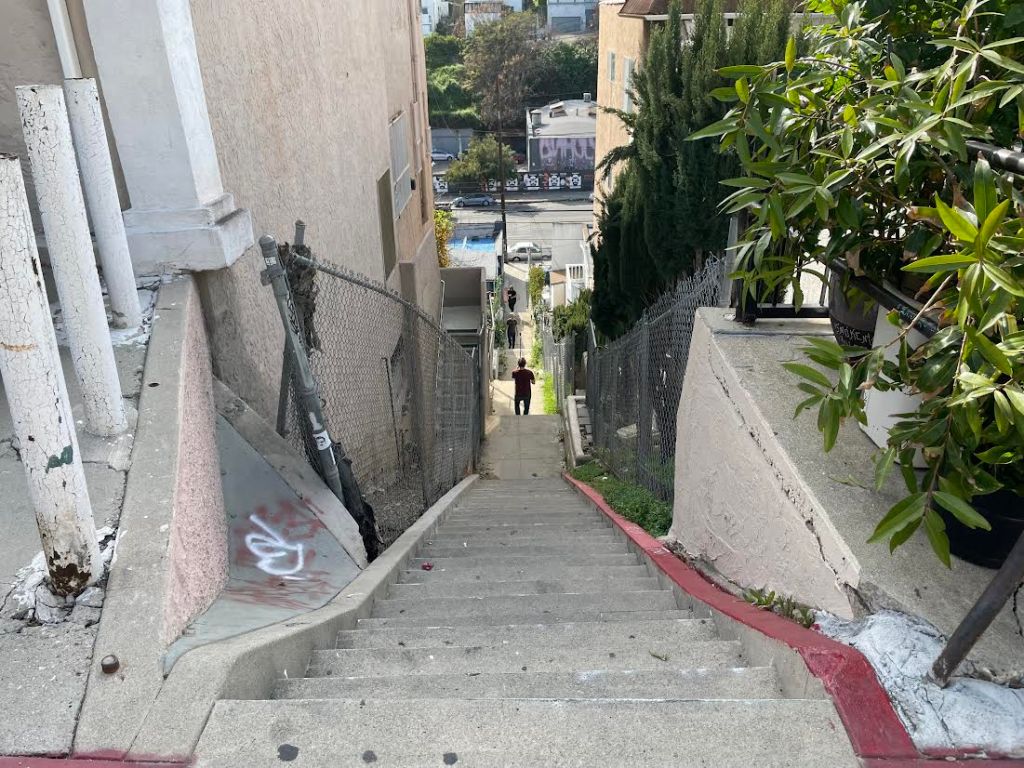
Los Angeles didn’t just grow more populous in the 1920s, it sprawled outward. At the beginning of 1920, Los Angeles was 942.4 square kilometers (363.9 square miles) in size. In the 1920s alone, it expanded (through 45 annexations) another 201.5 square kilometers (77.8 square miles). Over the ensuing 75 years, by contrast, Los Angeles would only expand another 70.6 square kilometers (27.2 square miles). Los Angeles is widely regarded as a “horizontal” city, with uniplexes (so-called “single-family homes”) characterizing the cityscape rather than highrises. It is also, however, quite hilly — home to three of the country’s ten steepest streets and punctuated by the greatest elevation difference (3 feet below sea level in Wilmington to 1,547 meter Mount Lukens) of any city in the world.
Cars were no longer solely the polished playthings of the posh but useful tools for conveying suburbanite strivers to newly annexed tracts on the bleak outskirts of town. There were also streetcar suburbs, though. Los Angeles’s rail history began with the Los Angeles & San Pedro Railroad‘s inauguration in 1868. By the 1920s, Los Angeles boasted the largest electric railway network in the world. Proximity to the lines of the Los Angeles Railway and Pacific Electric Railway were matter-of-factly promoted as amenities alongside indoor plumbing, electric street lights, paved streets, and racist housing covenants. The 1920s, too, though, were the great decade of Los Angeles’s pedestrian streets (public stairs, stair streets, and walk streets) — which I know because contractors and occasionally city inspectors often stamped the wet concrete with the date, which is almost always during that decade. The contractor stamp from another decade is about as rare as rain.
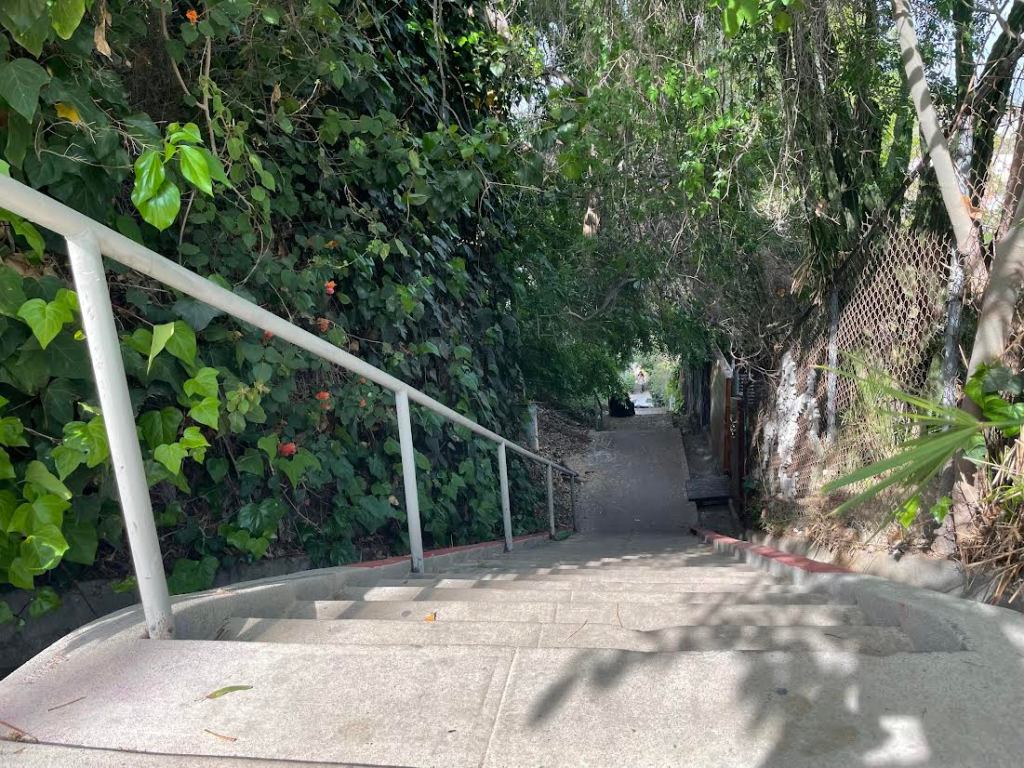
Sadly, most Angelenos eventually completely succumbed to the car craze. Sidewalks were shaved off of streets in order to surrender more space to gridlock, train service ended, and bus riders were derided and pitied. Interstate Freeways carved through neighborhoods like gangrenous wounds. Gas stations sprouted at nearly every commercial intersection like poisonous mushrooms. Historic buildings were demolished and replaced with lifeless surface parking lots. Today, 60% of trips under a mile are undertaken by drivers who think that a four-ton off-road vehicle is the most appropriate tool for picking up a soda and bag of chips from the convenience store at the end of the block. On an organized walk, once, a woman sheepishly confided in me that she never even walks from one end of the mall to the other and instead, retrieves her car after completing her shopping at one box store before driving to another where she re-parks.
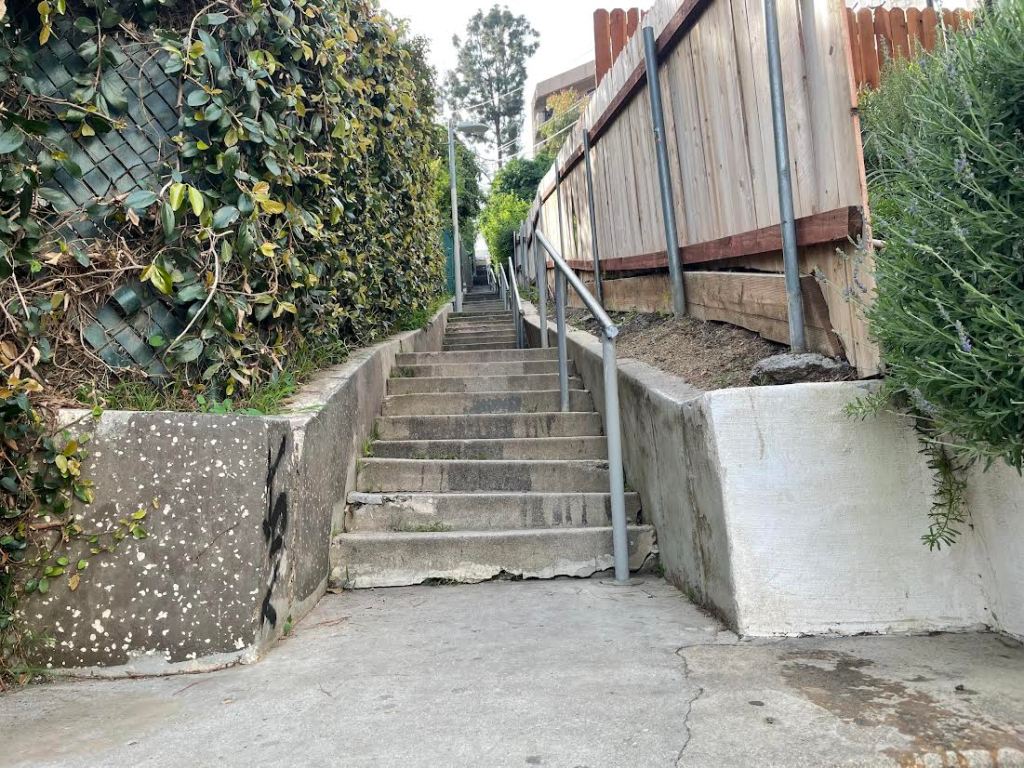
I know that there are people who walk in Los Angeles (besides just to and from their cars), though, in part because I walk in Los Angeles and, when I do, more often than not, I see other Angelenos walking, too. When I searched up how many Angelenos walk, all the internet wanted to tell me, disturbingly, was how many pedestrians were seriously injured or killed by cars in Los Angeles. Apparently, last year, there were 128 in the latter category and 486 in the former, and even though the majority of Angelenos say that they want to make fewer trips by car, most don’t feel safe walking or biking — and don’t feel that the bus or train are reliable. They’re not wrong. The city is doing little to change this perception or reality, kicking the can of dedicated bus and bike lanes down the road to the distant and seemingly arbitrary year 2035 CE.
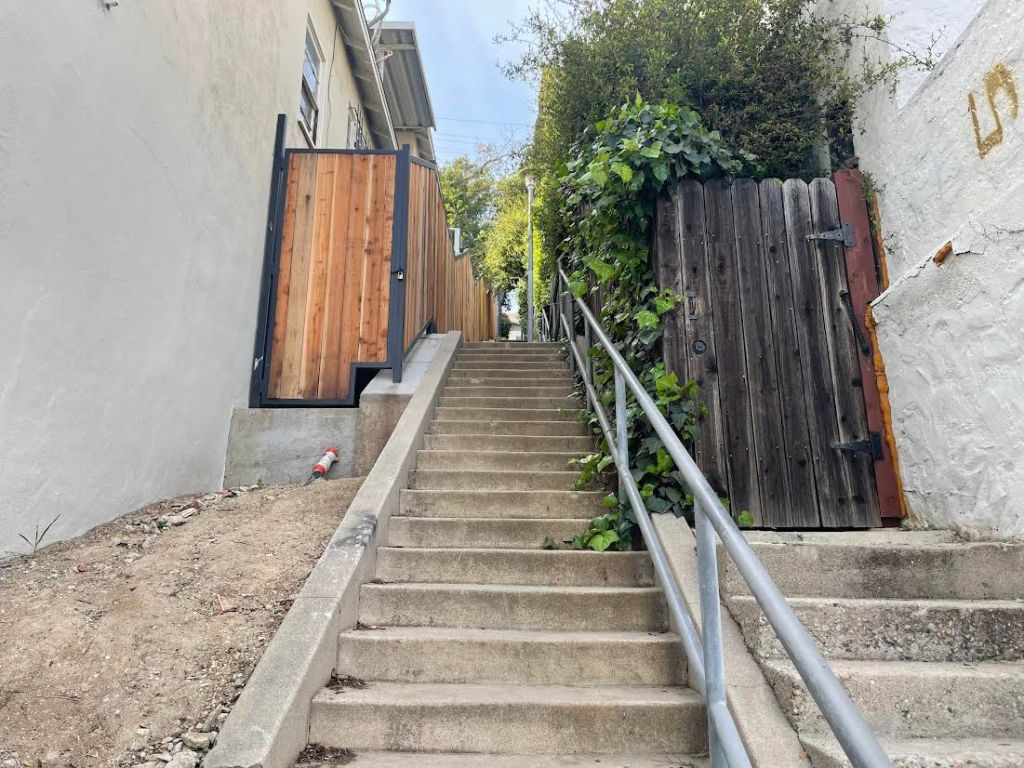
I wonder how long it took the city to build those public stairways after they were first proposed? Can anyone imagine the city building a public stairway today. Although the onus should be on motorists not to kill pedestrians, it’s understandable that many Angelenos feel it’s best to stick to hiking on trails or walking along stair streets because they’re off-limits to motorists — which is sufficient to deter all but the most reckless of drivers from attempting to enter them.
I know, too, that there are Angelenos who walk because of the popularity of hiking, organized walks, and the frequency with which one encounters Angelenos on the public stairs who are hiking a large set of them — usually recognizable by a map or book tucked under their arm, a floppy hat on their head, hiking boots on their feet, and hydration packs on their backs. Sometimes I ask if they’re tackling the public stairs and, more often than not, they reply, surprised, “Yeah! How did you know?” They are part of a growing subculture of stair hikers and, on Sunday, I encountered at least three.
There have been several books that have brought attention to Los Angles’s pedestrian streets. The first that I know of was Adah Bakalinsky and Larry Gordon‘s Stairway Walks in Los Angeles, published in 1990. In 2008, Bob Inman published A Guide to the Public Stairways of Los Angeles, (revised as Finding Los Angeles By Foot: Stairstreet, bridge, pathway and lane in 2014) and conducts organized walks that incorporate those public stairs. In 2009, Dan Koeppel organized the first Big Parade — an annual, two-day 55-kilometer Los Angeles walk that incorporated roughly 80 public stairways. In 2013, the Inman 300 — a 350-kilometer, ten-day hike that incorporates roughly 300 public stairways – was created. That same year, Dan Gutierrez started the walking group, SoCal Stair Climbers. In 2015, Paul Haddad published 10,000 Steps a Day in L.A.: 52 Walking Adventures. Secret Stairs. Los Angeles Times columnist Charles Fleming‘s Secret Stairs: A Walking Guide to the Historic Staircases of Los Angeles in 2010. Calling them “secret stairs” was a fun and clever bit of branding. Today, when I refer to the public stairways, the person with whom I’m speaking often clarifies “do you mean the secret stairs?”
Photo-mapping the stairs is an idea I first had six years ago. In 2016, as part of MaptimeLA, I joined a project involving Mapillary, the City of Avalon Fire Department, the Catalina Conservancy, and Carto to photo-map every block of every street in Avalon, on Santa Catalina Island using LG 360 cameras (and some trails as well). Google, famous for its street-view mapping (among other things) rarely street-view maps anywhere that the Google van can’t drive unless it’s merely for publicity (e.g. their “street view” maps of a stretch of Antarctica). Google is a corporation, after all, and its actions are driven by the need to deliver profits, not to profit to its users. Thus, trails, bike paths, narrow alleys, &c are glaringly omitted from its Google street view maps, even as the Google van mindlessly retraces the same streets over and over. Mapillary, by contrast, is an open-source platform to which anyone can upload with a phone or camera.
It was on Avalon that I had the idea of mapping public stairs. I later made a map of all of Silver Lake’s public stairs for the Silver Lake Neighborhood Council‘s Adopt a Stair Program. Last year, I got elected to the same neighborhood council returned to this project. One day, Johan Gyllenspetz from Mapillary, Bob Inman, John Wingler from SLNC’s Green Committee, and I did a test run, photo mapping the 84–step Primrose Hill Stairway, also known as the Landa-Redesdale Stairway. One Sunday in December, Johan and I reconvened and photo mapped most of the pedestrian streets of Los Feliz-adjacent northwest Silver Lake. Last Sunday, we photo mapped most of those in the southwest corner. Next, we plan to photo map the stairs of the northwest corner (the area referred to by some as “Silver Lake Heights”) and the Echo Park adjacent southwest corner. It will most likely be on a Sunday. You’re welcome to join — just indicate your interest in the comments.
No experience or special equipment is required. The only task involved is carrying a 360 camera mounted on a pole and a phone paired with it. The task only requires one person but it’s more fun with company. If you do want to join, I also recommend comfortable clothing and shoes, sunblock, and a bottle full of water. When this project is finished, I’ll update this post and all of the photo-mapped stairs will be available to view on the Silver Lake Neighborhood Council website. I hope, too, that other neighborhood councils will follow suit… and maybe, someday, we’ll even see more public stairways constructed.
UPDATE:
Here’s the invitation to the first of two events in which we’ll photo map the stairs of Silver Lake. Meet next Saturday at the Silver Lake Recreation Center at 1:30 pm.
Here’s the invite for the final event, which will begin and end at the Ortiz Taylor House on Saturday the 19th at 1:30.
Support Eric Brightwell on Patreon



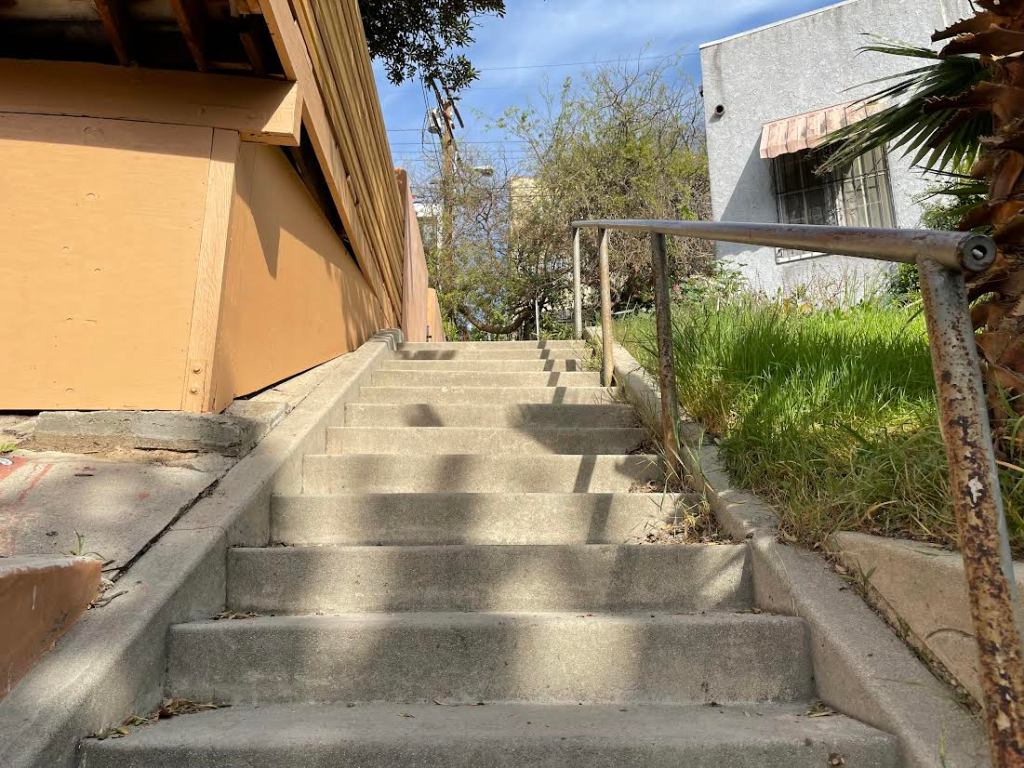
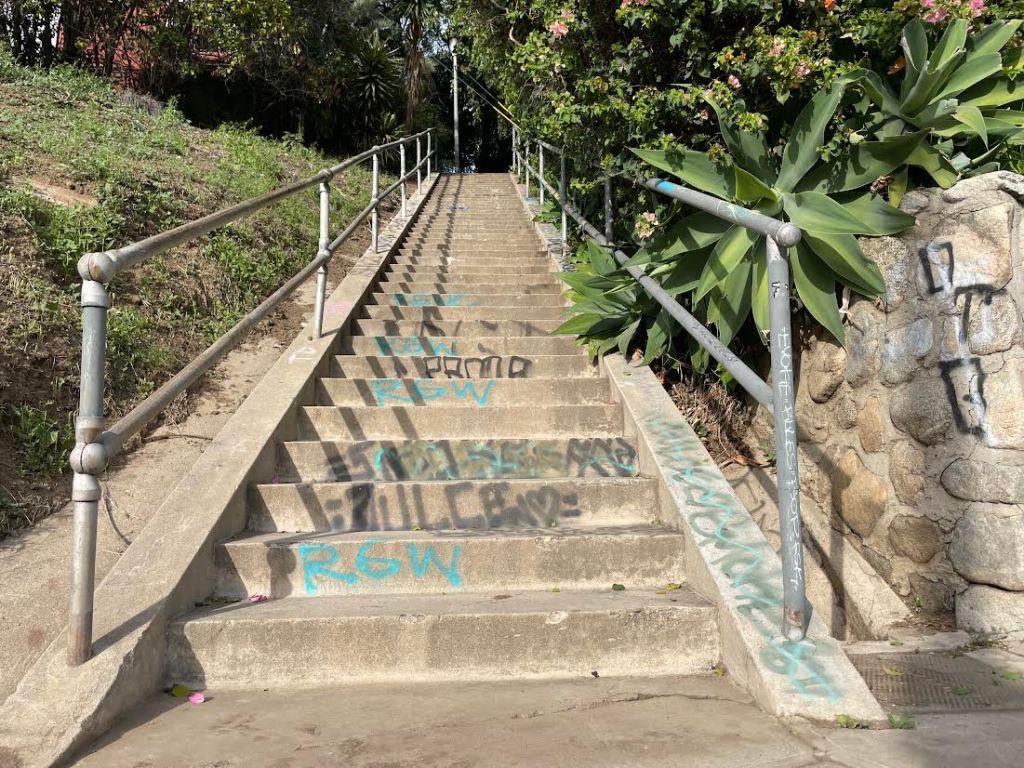
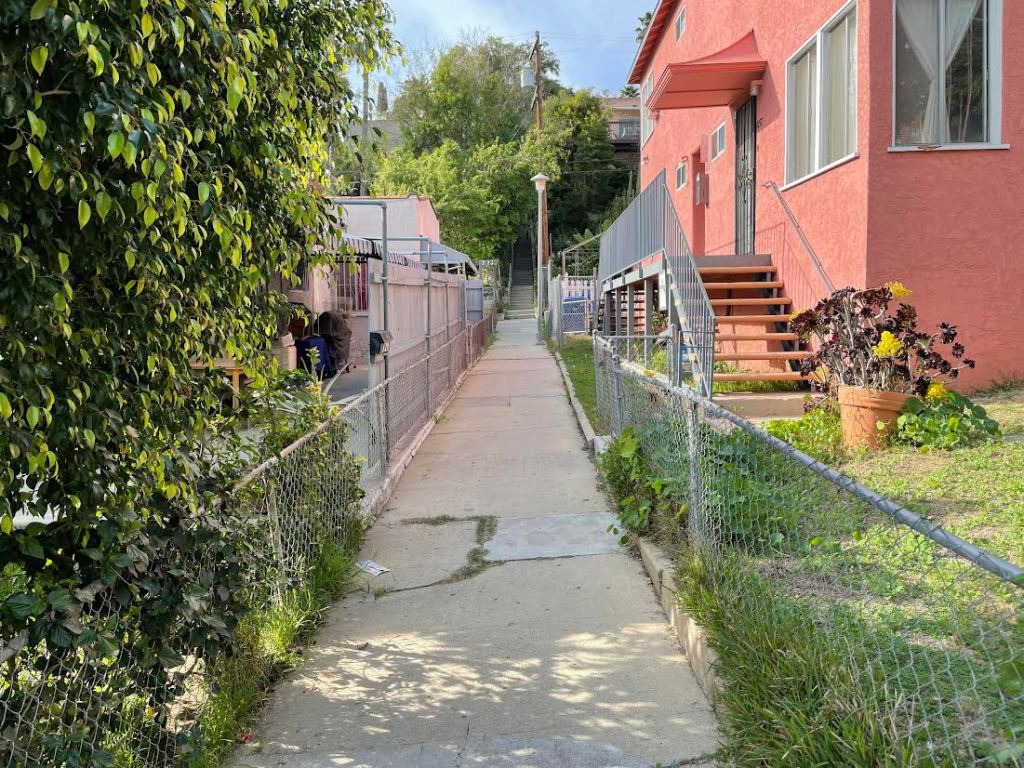
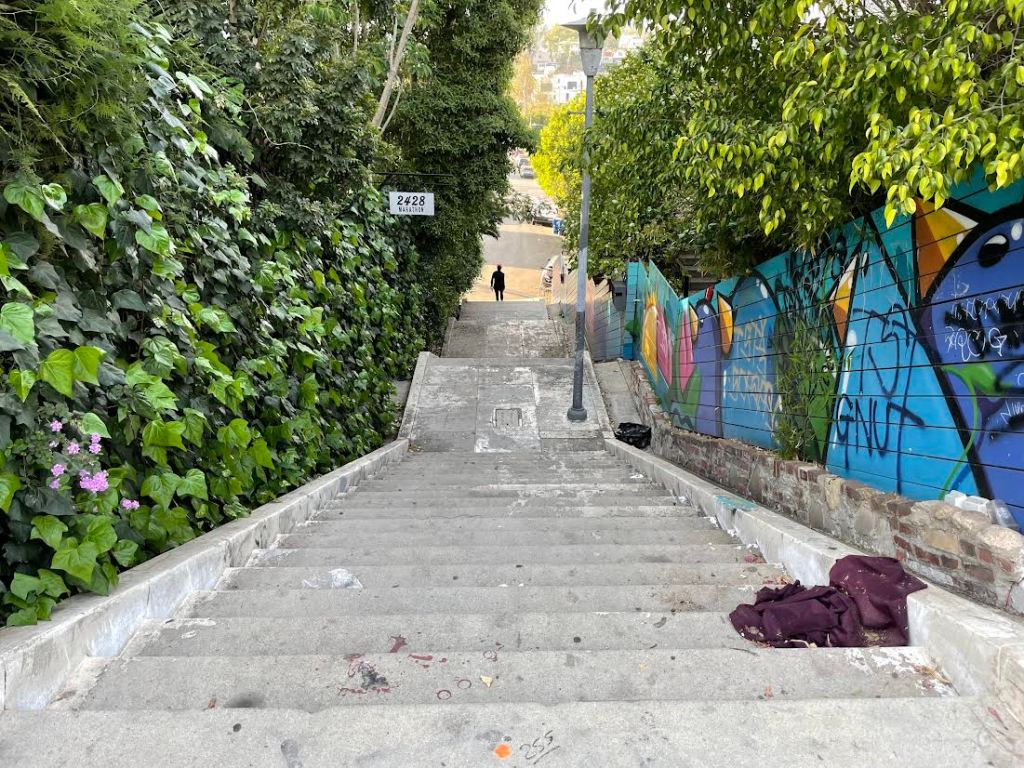


Eric I live in Los Feliz and have walked the stairs my entire life. Many have been closed or fenced since I was a kid and it seems they always being threatened. Like many people I feel the Public Stairs are like parks and beaches and outlets for recreation . Please let me know when you plan to do your mapping. I know of stairs that even the experts have not found with almost unbelievable history. The servant’s stairways of Laughlin Park created so workers would not enter through front doors and Lankershim’s grave in The Hollywood Hills.would be examples. Thanks for the great story. DAVID “ROCKET” ROWLEY
LikeLiked by 1 person
Thank you for your comment! I agree — streets, including the stairs, are a public asset. I sympathize with people who live near the closed stairs who are afraid of having them open but they belong to all of us, not just them — and perhaps there’s a way we can help them feel safe with them open. Imagine if streets with cars were gated because people that lived next to those streets didn’t want outsiders driving through their neighborhood. The city thinks less about inconveniencing pedestrians than motorists, though, simply because we prioritize cars above all.
LikeLike
Echo park resident here. I love the city’s many stairways and I’d love to join the photo mapping effort. Let me know. Thanks.
LikeLiked by 1 person
Here’s the invitation to the first of two events in which we’ll photo map the stairs of Silver Lake. Meet next Saturday at the Silver Lake Recreation Center at 1:30 pm.
http://evite.me/V58nzyuR7k
LikeLike
Thank you for helping keep the LA stairs in the news.
Speaking of walking in LA: https://www.latimes.com/lifestyle/story/2022-03-02/walking-50-miles-in-los-angeles.
LikeLiked by 1 person
I saw that. Walking 50 miles is impressive anywhere!
LikeLike
Hi Eric. This is Larry Gordon, co-author of the first book you mentioned. Your piece is wonderful. Congrats on such a good reporting and writing effort. Thanks.
LikeLiked by 1 person
Oh wow — so nice to hear from you! And thanks for helping to open Angelenos’ eyes to our wonderful pedestrian amenities! Am I correct in assuming that your book is out of print? I’d love to link to it if there’s a way to get it into the hands of readers that doesn’t involve Amazon.
LikeLike
And the “Music Box” steps were first used in an earlier Hal Roach-produced 1925 silent comedy short, “Isn’t Life Terrible?”, starring Charley Chase w/ supporting roles played by Oliver Hardy and Fay Wray.
LikeLiked by 1 person